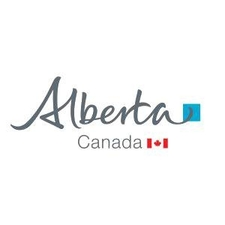XML
Type of resources
Available actions
Topics
Keywords
Contact for the resource
Provided by
Formats
Representation types
Update frequencies
status
-

The Treaty Boundary dataset is comprised of all the polygons that represent the historical treaty lands of Canada negotiated by First Nations over the years through treaty-making between 1867 - 1999. The approximate boundaries illustrate the traditional territories described in First Nations Statements of Intent to negotiate treaties which have been submitted to, and accepted.
-

Compiled by Alberta Data Partnerships Ltd. (ADP), on behalf of the Government of Alberta, the ATS v4.1 Polygons - Quarter Section with Road Allowance layer contains polygons that represent the location of Quarter Sections and adjacent Road Allowance Segment polygons, derived from the Master Alberta Township System points file published as ATS Version 4.1, dated March 31, 2005, and clipped to an updated Alberta Data Partnerships Ltd. (ADP) created version of the Alberta provincial boundary.
-

Distribution (range) polygons were assembled by regional SARA biologists using the best available information, including COSEWIC status reports, recovery potential assessments, academic literature, and expert opinion. These spatial data support the protection, recovery and conservation of species listed as Extirpated, Endangered, Threatened or Special Concern under SARA. Species distributions are also described and displayed in Recovery Strategies, Action Plans and/or Management Plans. Discrepancies may exist between the distribution data shown in a species SARA recovery document and the current spatial data. Please contact DFO for more information on any data discrepancies. Please refer to the metadata included with the data for full entity attribute information
-

Compiled by Alberta Data Partnerships Ltd. (ADP), on behalf of the Government of Alberta, the ATS v4.1 Polygons - Township Index polygon layer contains polygons that represent the location of Township polygons, derived from the Master Alberta Township System points file published as ATS Version 4.1, dated March 31, 2005, and clipped to an updated Alberta Data Partnerships Ltd. (ADP) created version of the Alberta provincial boundary. No road allowance segments are included in this layer.
-

The Non-Crown Mineral Ownership dataset represents land under which any party other than the Province of Alberta holds the mineral rights. This data includes freehold mineral rights as well as mineral rights held by the federal government for National Parks, Indian Reserves, and Surrendered Indian Reserves.
-

Current conditions and forecasts for selected Canadian cities. Raw XML data are used to generate each city page on the Environment Canada web site https://www.weather.gc.ca/.
-

The Alberta Provincial Terrain is a component of the Alberta Provincial Digital Elevation Model. The Alberta Provincial Digital Elevation Model has five components: the Alberta Provincial Terrain, the Alberta Provincial 25 Metre Raster, the Alberta Provincial 100 Metre Raster, the Alberta Provincial 25 Metre Hillshade and the Alberta Provincial 100 Metre Hillshade. The source data is contained within the feature dataset that houses the Alberta Provincial Terrain. The source data consists of feature classes generated from the mass points, soft breaklines and hard breaklines that were stored as ASCII generate files in 1:20 000 scale National Topographic System (NTS) blocks. The source data has three origins: Digital Elevation Model: Alberta 1980 1995 60K, Southwestern Alberta 1979 1996 50K and Northeastern Alberta 1955 1986 50K. These three datasets were processed separately and tiled seamlessly along their borders. The Digital Elevation Model Alberta 1980 1995 60K was compiled from 1:60 000 scale aerial photography using analytical stereoplotters with vegetation and structures excluded. The Digital Elevation Model Northeastern Alberta 1955 1986 50K dataset was created primarily from 1:50 000 scale contour and hydrography data acquired from Natural Resources Canada (NRCAN) with supplementary aerial triangulation points derived from 1:60 000 scale black and white aerial photography dating between 1980 and 1995. The Digital Elevation Model Southwestern Alberta 1979 1996 50K dataset was created primarily from 1:50 000 scale contour and hydrography data from Natural Resources Canada, using Geographic Information System (GIS) processes that recognise the relationship between surface contours and hydrography. The Alberta Provincial Terrain is an ArcGIS terrain dataset that is built from feature classes. Terrains are TIN (Triangulated Irregular Network) -based representations of a surface and must reside inside of a geodatabase. The surface is displayed as triangles with an elevation point at the apex of each triangle. Pyramids are built into the terrain structure to generalize the display of the triangulated surface at different scales. Some analysis can be conducted using terrains but gridded data, such as a raster or a lattice, is often more useful. The Alberta Provincial Terrain is used as a base to generate the Alberta Provincial 25 and 100 Metre Rasters.
-

This file contains the June 2022 spatial data - ACIMS Sensitive Element Occurrences for tracked species of conservation concern in Alberta. Vertebrate data is excluded. Please note this data is hazed to township. ACIMS (Alberta Conservation Information Management System) is the Alberta member of the international network of NatureServe Conservation Data Centres. This dataset is publicly available on the ACIMS website. More information regarding ACIMS can be obtained at: https://www.albertaparks.ca/albertaparksca/management-land-use/alberta-conservation-information-management-system-acims/
-

Oil Sands Agreement feature class contains provincial extent polygon features representing Oil Sands applications, agreements, leases, and licences, with varying term dates and conditions. These applications and subsequent agreements give the holder the right to explore Oil Sands.
-

Petroleum and Natural Gas Agreement feature class contains provincial extent polygon features representing Petroleum and Natural Gas applications, agreements, leases, and licences, with varying term dates and conditions. These applications and subsequent agreements give the holder the right to explore Petroleum and Natural Gas.
 Arctic SDI catalogue
Arctic SDI catalogue